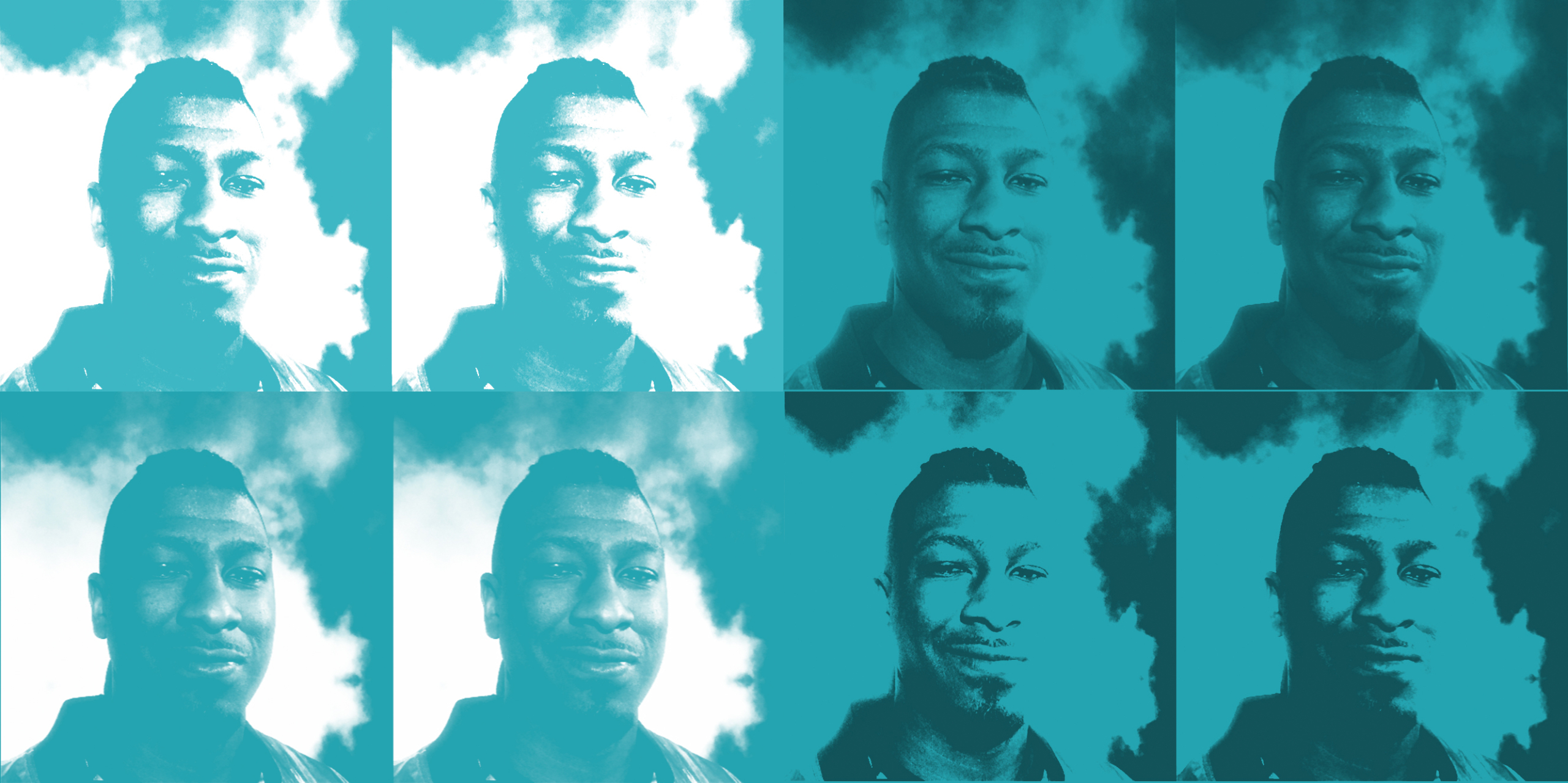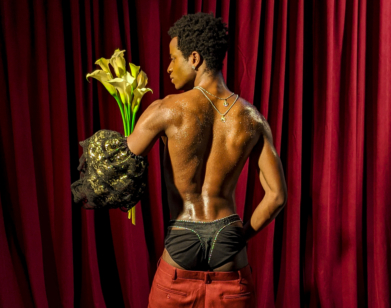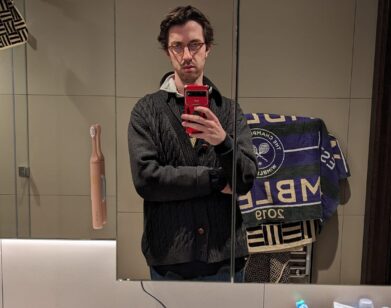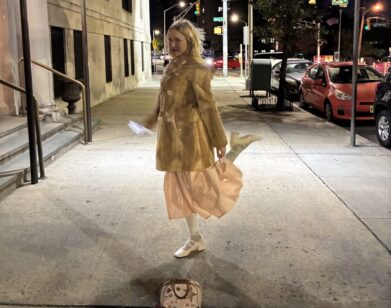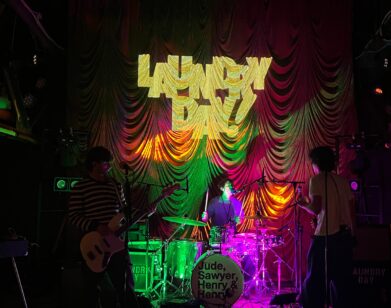Artist Kambui Olujimi Wants to Float Free
To envision a space created for artists, one that inspires cross-disciplinary and intergenerational collaboration set against the beauty of coastal Senegal, is a dream all its own. For Kehinde Wiley, that dream is now a reality, since founding Black Rock Senegal, his artist residency program in Dakar that will be welcoming its inaugural class of visual artists, writers, and filmmakers later this year. What’s more, Wiley, in collaboration with Absolut Art, released an exclusive print, “Young Girl Veiled with Flowers,” the proceeds of which will directly support the residency. “I chose ‘Young Girl Veiled with Flowers’ especially for Black Rock because it speaks to the layered complexities of sight and knowledge, provoking inquiry by sitting at the intersection between the masculine and feminine, the historic and the present,” says Wiley. “It draws inspiration from a beautiful and terrible past and seeks to posit a new vocabulary for how we can all move forward as thinkers, artists, and citizens.”
Before Black Rock officially opens, Interview caught up with Kambui Olujimi, one of the residency’s inaugural artists, who will be staying at the residency for the next two months. Olujimi is a multi-disciplinary artist whose current project, “North Star,” is a multimedia representation of black bodies floating in space, literally free from the oppression of white supremacy. For the project, Olujimi will embark on several parabolic flights, in which the participants will be momentarily weightless. Before he hops on a plane (to Senegal or elsewhere), Olujimi details all the art–and non-art–projects he hopes to get into while in Dakar, and why, for him, going into space would be a no-brainer.
———
MARK BURGER: What does it mean to you to be a part of Black Rock Senegal?
KAMBUI OLUJIMI: It’s a real honor to be a part of the inaugural class. I’m excited to be out there in Dakar. I think for me it’s like a concentrated period of time. So much of what you do as an artist… You’re buying time. You’re doing things that afford you space to focus. Also, Kehinde’s always been about community. Gathering artists together is something that he’s done forever, and so to have this residency seems really apropos.
BURGER: Is there a particular project that you’re planning to work on while you’re there?
OLUJIMI: What I’m going to work on out there is this project that I just did a Kickstarter for called “North Star.” Like most of my projects, it’ll be in multimedia. It’s looking at re-imagining the black body within the context of Western arts history and contemporary art. One of the centerpieces will be a series of weightless, slow motion, nude portraits, and those will take place after the Black Rock residency. I’ll be taking a group of people from Africa on these parabola flights. The plane goes up and then when it free falls, you get thirty seconds of weightlessness. But while I’m over in Dakar, I’m going to be doing interviews with different people at the space programs on the continent, and do a series of large-scale drawings and work on some other research that’s around this video in particular. There’s five space programs on the continent. So I’m interested in interviewing, possibly visiting the actual space programs, as well as the aspirational space of outer space that’s existed in the post-colonial era.
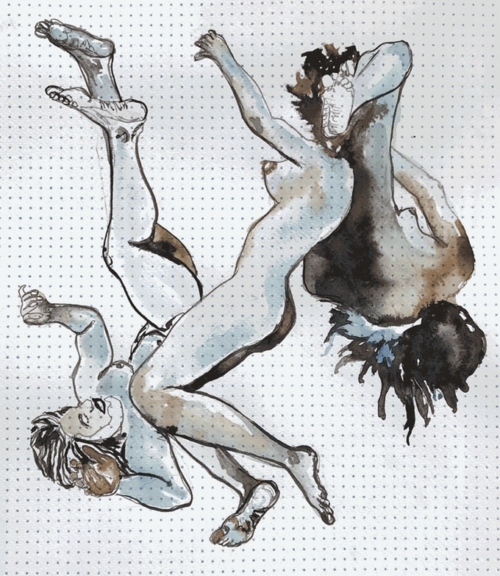
An original ink drawing created by Olujimi that envision his project, “North Star.”
BURGER: Have you ever been on one of those parabola flights before?
OLUJIMI: No. I’m looking forward to it. I think it’s going to be pretty amazing to be outside of gravity and still be on the planet. We never escape it, you know? I’m thinking about the metaphoric weightlessness of the black body outside of systems of oppression, and then coupling that with the actual weightlessness of the body in these portraits and the refraction that will happen through post-production, where it’s like multiple bodies flowing in and out of one another. I think it’s going to be a lot of fun.
BURGER: How did you originally find out about Black Rock?
OLUJIMI: There all these residencies, and everybody sends emails out, and then I thought, maybe I’ll apply. I thought it would be really interesting. I didn’t know a lot about it. I knew that it was new, and so there’s no history to it. I was just like, okay, I’ll just move forward into the unknown with it. And I didn’t think about it again until months later when I got an email asking if I could get on the phone. Then they said they were going to decide later that week, and I got an email when I was on my way to the park to hang out with my family. It just seemed real surreal. Like, I was getting snacks together and I was like, oh, I’m going to Senegal, it looks like.
BURGER: Have you ever been before?
OLUJIMI: I’ve never been to Dakar, and I’ve never been to Senegal. I have been to the continent a couple of times and I’d say every time is radically different. So I’m excited to check this out.
BURGER What’s one non-art related thing you’re looking forward to the most?
OLUJIMI: To get clothes designed. I guess it is still art related. I’m a tall guy, so I design clothes and then get them made when I have the opportunity. I’m tempted to bring fabric, but I’m really excited about the fabric there. Also, I want to go out on the ocean. I’m thinking about maybe taking a boat to Cape Verde Islands. I did a project one time where I spent a few weeks on the Atlantic Ocean with no land in sight. It was very transformative.
BURGER: That sounds kind of scary.
OLUJIMI: We were in a hurricane for three days.
BURGER: Wait, what?
OLUJIMI: It wasn’t a tiny little ship, but it was still a hurricane nonetheless. It was pretty… like I said, it was a transformative experience. I didn’t think it could even be like that. You have this storm raging, and it’s just a constant. It’s like, “Oh, the storm’s still with us. Cool.”
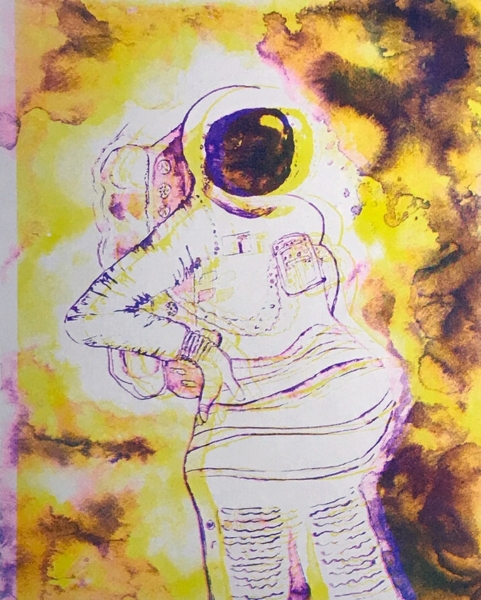
“Astronaut,” created by Olujimi in support of “North Star.”
BURGER: How long have you been creating or thinking about “North Star”?
OLUJIMI: It’s been in my head for maybe a year. You get tired. You get so exhausted seeing the black body being depicted as a space of trauma and violence. And then those depictions become expectations by other people for your body, and so as a black man, I have to negotiate this mythology. I have to negotiate these projections. Not only is it dangerous and stressful and exhausting, but it’s so antithetical to my existence. I wanted to make a proposition. I started to think, “What does the black body look like in zero gravity, outside of the weight of that oppression?”
That made me start thinking and wanting to write more about this idea. Is it an escapist idea? Is it possible in an American context, given the history and the economy of the country? And I said, let’s just see what happens. I’m interested in interviewing people who have been in space. There’s a lot of other conversations that I think will help to inform what’s happening visually in the video and with that being throughout the installation.
BURGER: If you ever got the chance, would you go to space?
OLUJIMI: Yep. That’s a no brainer. Without hesitation.
BURGER: Why would you want to go?
OLUJIMI: We live essentially on this bubble. It’s like living in a house but only living in one part of one room. Given the opportunity to go to the front yard, the backyard, to travel around the entire house, you would take that in a heartbeat. Being on the open ocean, you think about how expansive it is, and how undramatically impressive it is. It’s so low key, and I think that’s what space would probably be like, where you realize how much open space there is and what the scale is. I think that kind of experience will let you know where we really are in the universe.

